Maurice Lindsay CBE was a Scottish broadcaster, writer and poet. He was born in Glasgow. He was educated at The Glasgow Academy where he was a pupil from 1928-36. In later life, he served as an honorary governor of the school.
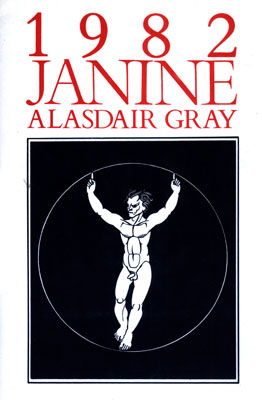
1982, Janine is a novel by the Scottish author Alasdair Gray. His second, it was published in 1984, and remains his most controversial work. Its use of pornography as a narrative device attracted much criticism, although others, including Gray himself, consider it his best work.

James Kelman is a Scottish novelist, short story writer, playwright and essayist. His fiction and short stories feature accounts of internal mental processes of usually, but not exclusively, working class narrators and their labyrinthine struggles with authority or social interactions, mostly set in his home city of Glasgow. Frequently employing stream of consciousness experimentation, Kelman's stories typically feature "an atmosphere of gnarling paranoia, imprisoned minimalism, the boredom of survival.".

Poor Things: Episodes from the Early Life of Archibald McCandless M.D., Scottish Public Health Officer is a novel by Scottish writer Alasdair Gray, published in 1992. It won the Whitbread Award and the Guardian Fiction Prize the same year.
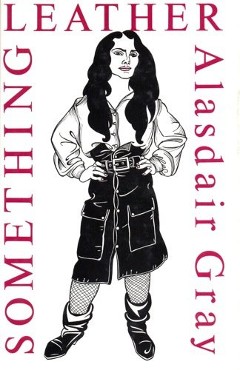
Something Leather is a novel-in-stories by Alasdair Gray which was published in 1990.
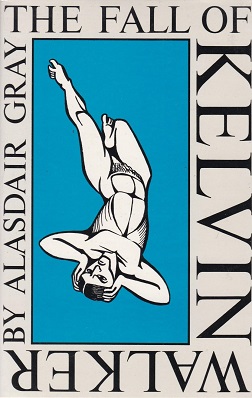
The Fall of Kelvin Walker is a novel by Alasdair Gray. The book was adapted from Gray's earlier play of the same title. It was originally published by Canongate in 1985 and the revised text was published by Penguin Books in 1986, ISBN 978-0807611449.
Canongate Books is an independent publishing firm based in Edinburgh, Scotland.
David Greig is a Scottish playwright and theatre director. His work has been performed at many of the major theatres in Britain, including the Traverse Theatre, Royal Court Theatre, Royal National Theatre, Royal Lyceum Theatre and the Royal Shakespeare Company, and been produced around the world.
Alasdair Grant Taylor (1936–2007) was a Scottish artist and sculptor.
Scotland's National Book Awards, formerly known as the Saltire Society Literary Awards, are made annually by the Saltire Society. First awarded in 1937, they are awarded for books by Scottish authors or about Scotland, and are awarded in several categories.
Alasdair Maclean (1926–1994) was a Scottish poet and writer, born in Glasgow. Extracts from his diary provide an account of Scottish crofting life.
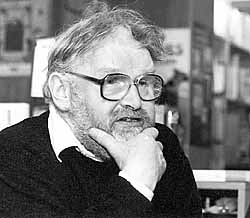
Alasdair James Gray was a Scottish writer and artist. His first novel, Lanark (1981), is seen as a landmark of Scottish fiction. He published novels, short stories, plays, poetry and translations, and wrote on politics and the history of English and Scots literature. His works of fiction combine realism, fantasy, and science fiction with the use of his own typography and illustrations, and won several awards.
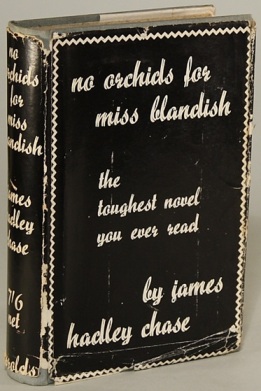
No Orchids for Miss Blandish is a 1939 crime novel by the British writer James Hadley Chase. It was a critical and commercial success upon release, though it also provoked considerable controversy due to its explicit depiction of sexuality and violence. In 1942, the novel was adapted into a stage play and in 1948 it became a British film. The novel became particularly popular with British servicemen during World War II.
Robert Trotter was a Scottish actor, director, and photographer.
Events from the year 1981 in Scotland.
Chris Dolan is a Scottish novelist, poet, and playwright. He is married to Moira Dolan and they currently live in Glasgow with their children. He is a lecturer in English Literature at Glasgow Caledonian University and is Programme Leader of the master's degree programme in Television Screenwriting there.
The Guardian's 100 best novels is a list of the best English-language novels as selected by Robert McCrum for The Guardian.
Graham Eatough is an English theatre director and playwright, based in Scotland. He was a founding member of theatre company Suspect Culture.
Alasdair Gray (1934–2019) wrote novels, short stories, poetry and drama.
Alan Fletcher was a Scottish artist. He has been described as “one of the most exciting young artists of his generation”.







